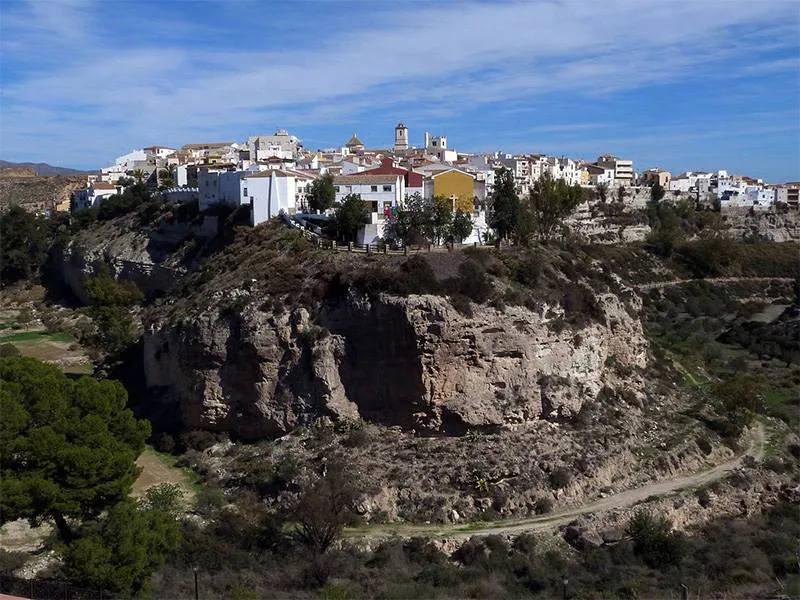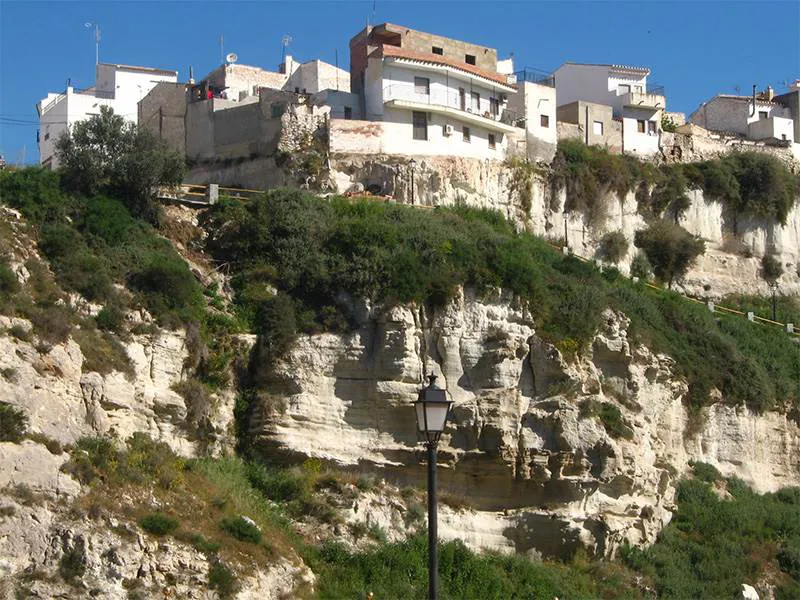Sorbas is on a mountain overlooking the Rio Aguas in Almeria province. It is known for its ceramics and the nearby Karst en Yesos de Sorbas Natural Park.
By Nick Nutter | Updated 28 Apr 2022 | Almería | Villages |
Login to add to YOUR Favourites or Read Later


View to Sorbas
Perched on top of a mountain, Sorbas literally overhangs a ravine created by the Rio Aguas. The town is known for its precariously positioned houses overlooking the ravine. The Rio Aguas is normally dry, being in a semi-arid zone, yet it has managed to carve out a spectacular canyon through the soft gypsum rock that makes up the Karst en Yesos de Sorbas Natural Park.


Houses overlooking the Rio Aquas, Sorbas
The gypsum has helped to produce a clay that makes fine pottery and that is what the area was famous for as far back as the Iberian period. The name Sorbas comes from the Arabic meaning ‘pot of sand’ and it is during the Moorish period that Sorbas became an established town.


Moorish oven
In the lower part of Sorbas, in the area called Alfareria, off Calle San Roque, is a large communal oven. It was built during the Muslim occupation period and is in two parts. The lower section was used to bake bread and the upper part for the firing of ceramics. A plaque nearby explains how the oven developed. Initially it was fuelled by wood and, in its last incarnation, by petrol and diesel. It was in use until the 20th century.


Pottery workshops, Sorbas
During the 19th century there were over 20 businesses making pots including a distinctive pitcher in the shape of a rooster. They were exported to Jaen, Granada, Murcia and other countries via the port at Almeria. Now there are only a few pottery workshops, the largest on the same Calle San Roque.


Village Well
Opposite the oven is the Muslim well. How times change. Originally operated by manpower or a donkey, it now has an ancient and defunct mechanical pump that was installed in the late 19th century.


The canyon of the Rio Aquas
In the upper part of the town, Sorbas is the typical web of narrow, steep streets found in towns of the Moorish period. Life centres around the square in front of the 16th century Santa Maria Church, built on the site of a mosque. There are ample signs of the wealth generated by the pottery manufacturing industry, grand houses once owned by the Duke of Marqués del Carpio, the Duke of Valois and the Duke of Alba. More modern is the Teatro Villaespesa, a centre for cultural pursuits.
Lying on the edge of the Karst de Yesos en Sorbas Natural Park, Sorbas hosts the visitor centre Los Yesares. The centre has a reconstructed cave and information about the geology and geography of this unique karstic area. Archaeological remains found in the area help explain how the land was used in prehistoric times. There is also information about a walking trail called the Los Yesares Trail.
This 4.5 kilometre path takes you through some of the most spectacular karstic formations in the park. It starts in the abandoned village of Marchalisco Viñicas, about 6 kilometres east of Sorbas near La Herreria, and ends overlooking the Rio Aquas.
Sorbas today depends on its gypsum. The Los Yesares quarry is the largest in Europe producing more than 4 million tons of Messinian gypsum each year. Around 600 lorries per week carry the load to the port of Garrucha from where it is shipped to various countries to be used in the construction industry.